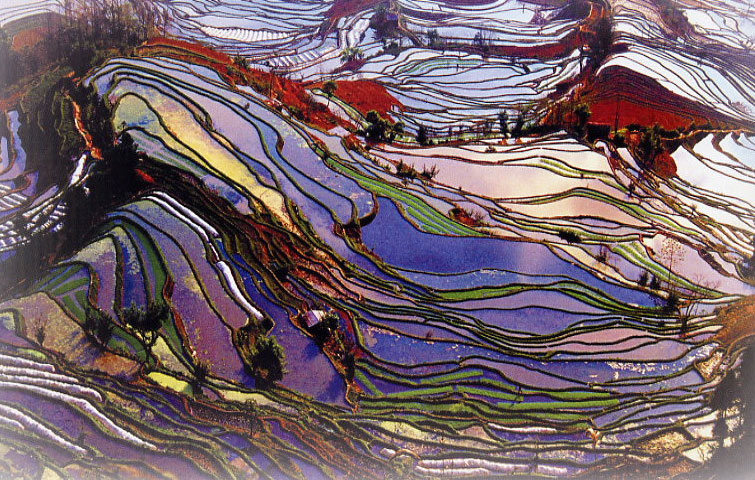Stairway to Heaven - Hani Terrace
Updated: 2007-07-31 08:41
Twin brothers of work and art

The terraces began with hardworking farmers' hoes. Because of the rugged and mountainous landforms, the Hani People creatively invented terraces piled up with stone walls to plant rice. Four to five thousand trunk channels were built on the mountains to draw water to the terraces.
The Hani people began building terraces as part of farming, but their works turned out to be art.
Xu Guangqi, a great agriculturalist of the Ming Dynasty (1368-1644), has categorized it as one of the seven forms of arable lands in ancient China. Stretching along the southern banks of the Honghe River in Yuanyang, Luchun, Honghe and Jinping counties, Hani Terrace occupies vast areas in this mountainous region. In Yuanyang County alone there are more than 170,000 mu (a Chinese unit of area equal to 1/15 of a hectare or 1/6 of an acre) of terrace -- the largest part totalling more than 10,000 mu. From the foot of the mountain to the very tip, there are as many as 3,000 terrace folds.
With its unique and profound values grounded in both science and culture, Hani people have maintained their way of living throughout the ages. Centered around the terrace, the festivals, costumes, song and dance, and literature of the Hani people all reveal their spirit of conformity and harmony with nature.
 | 1 | 2 | 3 | 4 |  |

